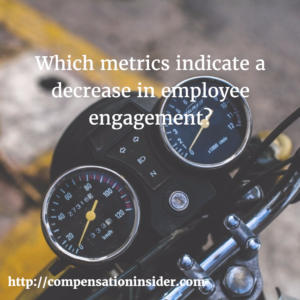Hard metrics indicating a potential decrease in employee engagement
- Increase in number of sick days
- Increase in number of employee grievances
- Increase in requests for transfers / internal mobility
- Increase in leave requests including unpaid leave / sabbaticals
- Decrease in number of hours worked (people don’t stay late or arrive early as before)
- Decrease in productivity
- Growing unwanted attrition where you lose people you’d like to retain
The lack of employee engagement will also be clearly expressed in specialised employee surveys if you run them.
Soft or qualitative indicators of lower employee engagement
- Decreased focus on delivery and deliverables – deadlines are increasingly being missed
- Low morale, employees don’t participate in social activities (“who cares”” attitude)
- Increase in number of conflicts
- Lack of cooperation between teams
- Change in team atmosphere/”buzz”, employees don’t smile anymore
The next step
Of course, the first thing is to confirm the facts. If only one factor is showing, it may not necessarily be a sure sign that employee engagement is negatively impacted in a durable manner.
You also need to identify the demographics of the disengaged population to see if your engagement issue is specific to one department or division or whether the issue is more widespread. Are specific nationalities affected more than others ? Does gender play a role ? Are certain job levels more prone with this lower engagement ?
Only after establishing the actual extent of the situation will you be able to start thinking of solutions in order to establish healthier levels of engagement.
Related posts :




[…] By Sandrine Leave a Comment My latest post was about the metrics that can be used in order to assess a decrease in engagement levels. I expanded that post from a slide extracted from one of my workshops on designing retention and […]